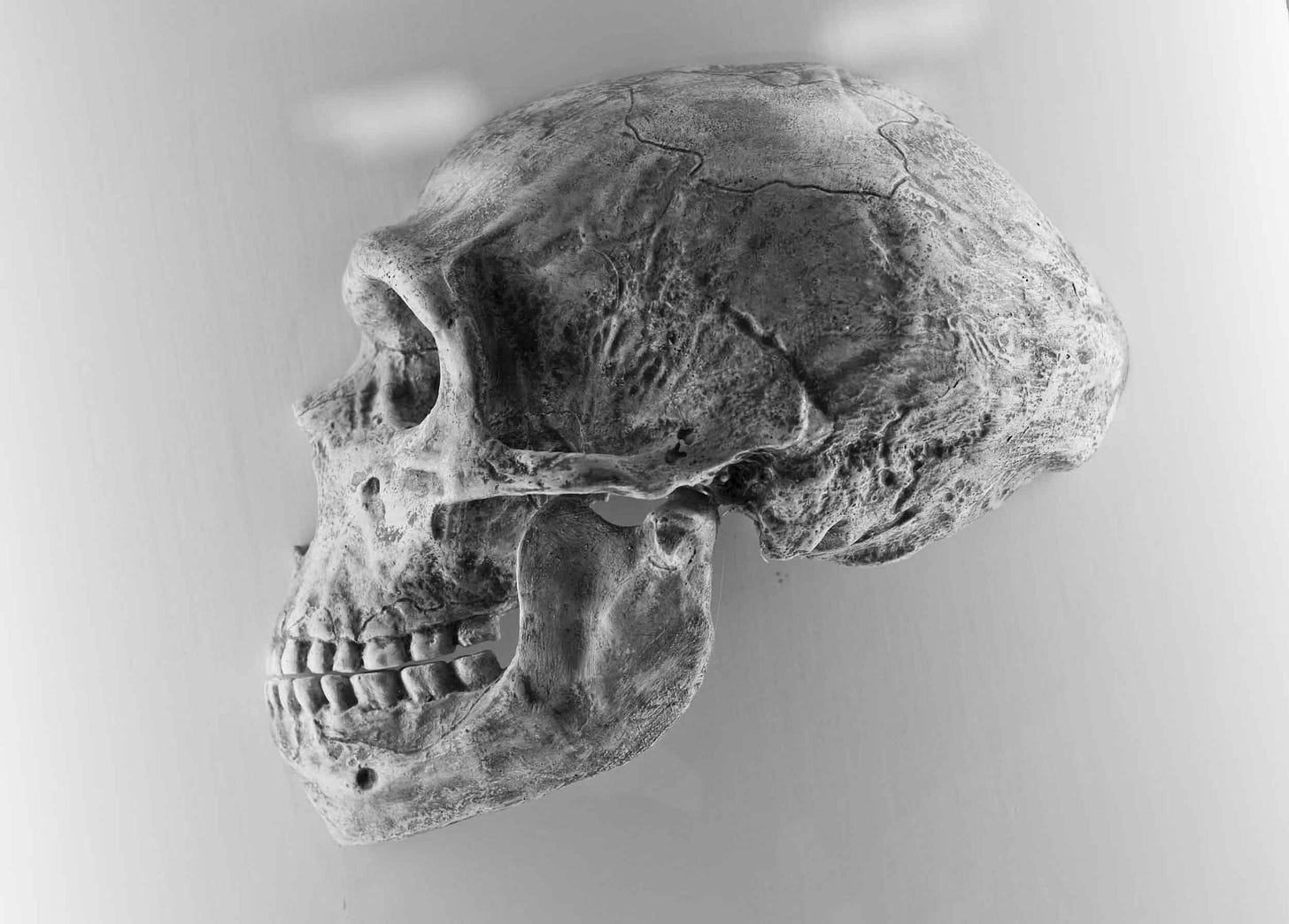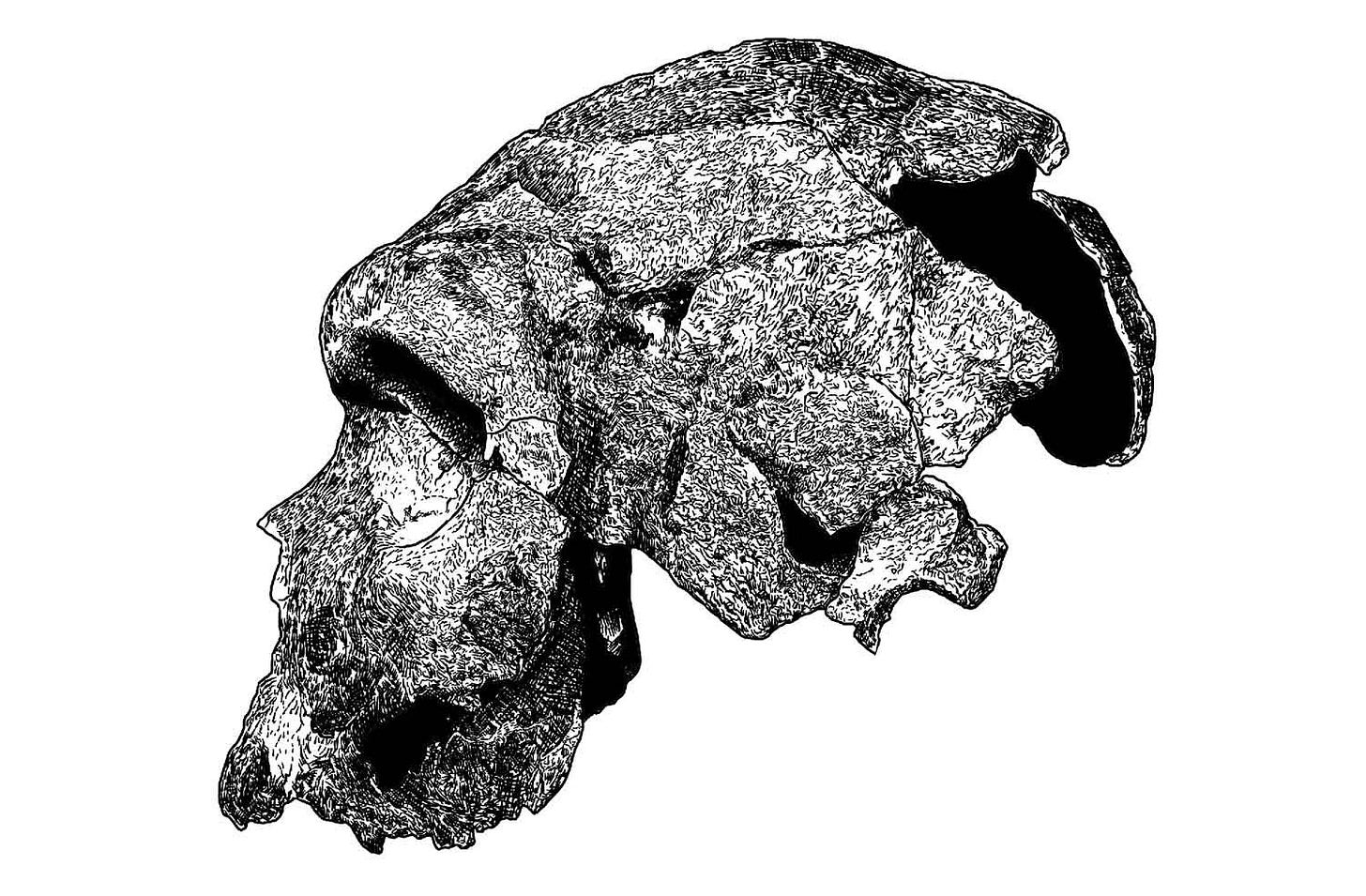Informal hominins, from Denisovan to superarchaic
In a new research article, I review the ways that paleoanthropologists name ancient groups outside the Linnaean system.

I have a new article just published in the journal PaleoAnthropology that looks at how scientists use informal names for ancient groups. From Denisovans, to superarchaics, to robust australopiths, there are dozens of names for ancient groups that are not part of the formal Linnaean taxonomy.
Why would scientists prefer to use “Denisovan” instead of coming up with a species name for this group? Or “modern human” instead of Homo sapiens? And why didn’t some names ever catch on, like the Heidelbergers or the chumanzees?
The main idea of my article is that researchers favor non-Linnaean names because they offer flexibility—especially when different scientists disagree about whether a Linnaean name is appropriate.
The influence of DNA
Informal names have been proliferating lately. A big reason is DNA analysis, which has enabled scientists to identify ancient groups even without fossils that could be assigned a Linnaean species name.
The “Denisovan” question is easy to answer: The genome from the Denisova 3 finger bone was recognizably different from any known DNA, including Neanderthals, but the bone itself would blend unnoticed into almost any fossil sample. Without more DNA evidence from a broader array of fossils, it wasn’t possible to evaluate whether this genome might represent a group already known to science—such as Homo erectus. “Denisovan” as a name made a lot of sense.
DNA researchers have added many new population names to human prehistory. In the research area known as archaeogenetics, which covers human remains from the last 25,000 years or more, researchers have discussed various ways of formulating names for groups. There may be little agreement, but some patterns are recognizable and repeated again and again. Some DNA has come from groups that already had names, from Hittites to Egyptians. Some has come from cultural contexts that archaeologists have previously named, like the Hoabhinian culture of Southeast Asia, or the Yamnaya of the Eurasian steppe. Some come from an individual from a specific site, like the Villabruna cluster. Still others are groups that are reconstructed from DNA models, like Basal Eurasians.
Paleoanthropologists look much further back in time, and their names for groups known from DNA haven’t been systematic at all. Until recently, genomes from before 25,000 years ago were so few that a single individual could be the unit of analysis: ‘Ust-Ishim, or Tianyuan. This practice stretches back into archaic peoples: the Thorin genome and the Altai Neanderthal each have their place in naming schemes. Researchers have come up with some creative names for groups that are known from models and not fossils: the Neandersovans, the superarchaics, the ghost moderns.
There’s no sign of this stopping anytime soon.
Some might argue that scientists should lock in some procedures for naming such groups, so that it won’t be such a free-for-all. But we already know from Denisova, Chagyrskaya, and Vindija that the data from different sites with DNA evidence don’t shoehorn well into any single naming system. I personally love the diversity of names. They enable researchers to be flexible and precise in the way they use data in different kinds of analyses.
The problem with subspecies
When it comes to fossil evidence, the main reason why researchers use names like “Middle Pleistocene Homo” instead of Homo heidelbergensis, or “Neanderthal” instead of Homo neanderthalensis, is that they don’t necessarily agree that the formal taxonomy has got it right. Many think Neanderthals ought to be recognized within Homo sapiens. Some continue to suspect that Paranthropus may not be quite the right way to classify the big-jawed robust australopith species.
It can be objected that some of these names don’t solve the problems they are working so hard to avoid. Almost nobody is thinking of Homo naledi when they use “Middle Pleistocene Homo” as a name—even though H. naledi literally is a species of Homo known so far only from the Middle Pleistocene. Precision would be better: I’d almost rather the Heidelbergers be revived, and maybe joined up with Bodoans.

Some scientists prefer calling such groups subspecies. That was trendy back in the 1960s when Bernard Campbell and William W. Howells subspecified everything from Homo sapiens steinheimensis to Homo erectus mauritanicus. The textbooks when I was a student had Homo sapiens sapiens and Theodosius Dobzhansky’s Homo sapiens neanderthalensis. Subspecies fell away from professional conversations in the 1990s—in part because discovery of new species got going again.
But then in the early 2000s a few players tried their hands at subspecification again: Ardipithecus ramidus kadabba, Homo sapiens idaltu, and the more recent Paranthropus robustus ukusa are all examples.
Are subspecies names a good idea? There is one advantage: They provide a way for researchers to lock in a name just in case later evidence shows that the group should actually be recognized at the species level. This was what happened to Ardipithecus kadabba as more fossils emerged to show greater distinctiveness from Ardipithecus ramidus.
But the notion of species-in-waiting is exactly why many researchers don’t want to name groups in this way. Lock-in is the opposite of flexibility.
Fossil names and race names
Another reason for a return to formality by many researchers in the 1960s was their growing discomfort with scientific names for human races. Classification of races and classification of fossil hominins were tied together through much of the late nineteenth and early twentieth centuries.
Names for ancient groups like “Neanderthal” and “Cro-Magnon” were envisioned as racial terms, and anthropologists imagined groups like the “Furfooz race” and the “Boskops”. Racial typology was the main methodology of anthropologists like Ernest Hooton, who recognized dozens of races of living humans in an elaborate hierarchy of major and minor types. Anthropologists like Arthur Keith discussed whether the Grimaldi race—named for skeletal remains from the Grotte dei Balzi Rossi in northern Italy—might be more aligned with Caucasoid or with Negroid characteristics, using racial terms that anthropologists of the era applied widely to living people.
One term more than any other survived from this era: modern human. The term originated from the nineteenth-century period of race science, as anthropologists sought to contrast newly-discovered extinct human groups from the modern races that they recognized around the world. Many of them accepted the notion that today’s human races had separate origins deep in time. Under this misconception, the ancestry of groups like Neanderthals seemed to be vastly more ancient still. That historic origin of the term modern human is the explanation for a major disconnect: the idea that “modern” should apply to fossil individuals who lived hundreds of thousands of years ago.
To recognize such extinct groups, paleontologists and anthropologists coined an enormous number of formal Linnaean names. Some of those we remember today, if we don’t use them—Sinanthropus pekinensis, Meganthropus palaeojavanicus, Pithecanthropus erectus. Others are mostly forgotten, including more than a dozen different species names applied to various Neanderthal fossils. Most had common or informal alternatives, such as Peking Man and Java Man.
The New Evolutionary Synthesis of the 1940s and 1950s brought more simplicity to classification. Names like Sinanthropus and Pithecanthropus went the way of Raphus cucullatus. The downgrade of many species names to subspecies was part of this era, but many would eventually be forgotten entirely. Elaborate classifications of human races were likewise abandoned, as researchers recognized that most human groups were better understood simply as populations, and even the so-called “major races” had been defined and recognized for social and political reasons more than for biological heritage.
The strength of flexibility
Again and again in the article I come back to the idea that informal names can be changed. That cuts against one goal of formal taxonomy: the goal of stability of names over time. When people can use a term in a new way, it can create some confusion with the old way of using the same term.
But we are in an era where our understanding of biological relationships of fossil hominins changes quite often. Species and subspecies names come with a large set of assumptions for most people, and those have been changing too. New evidence from DNA and ancient proteins are shifting what we think about the role of genetic exchanges, founder effects, and morphological convergence.
Names for fossil groups are useful when they let us communicate across disciplines and to the public. That’s one reason why informal names like hobbit and Dragon People are making such a comeback.
For me, the value of such informal names can be summed up in a quote from the systematist Ernst Mayr:
“The formal application of generic and specific names simulates a precision that often does not exist. To give the impression of an unjustified precision is as much of a methodological error as to make calculations to the fifth decimal when the accuracy of the original data extends only to the first decimal.” —Ernst Mayr
I say, long live the Neanderthals, Denisovans, and other informal hominins.
Notes: Raphus cucullatus is better known as the dodo.
References
Hawks, John. 2025. Informal nomenclature and hominin classification. PaleoAnthropology (early online) https://doi.org/10.48738/2025.iss2.1248
Mayr, E. (1950). Taxonomic Categories in Fossil Hominids. Cold Spring Harbor Symposia on Quantitative Biology, 15, 109–118. https://doi.org/10.1101/SQB.1950.015.01.013


Hello Dr. Hawks!
I hope you will post soon about the Denisovan ancestry paper out recently with results for Jomon and Tianyuan ancient DNA samples (among many others). How does that jibe with other work? Looking forward to your elucidation!